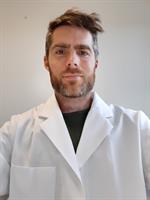 Automation of the Sample Purification Method for the Analysis of all 209 Polychlorinatedbiphenyls and Dioxins
Automation of the Sample Purification Method for the Analysis of all 209 Polychlorinatedbiphenyls and DioxinsChallenges and Opportunities for Solid Phase Extraction
Oral Presentation
Presented by G. ten Dam
Prepared by G. ten Dam1, C. van Wakeren1, W. Traag1, H. Fujita2, J. Markesteijn3
1 - DSP-Systems, Darwinstraat 7A, Ede, Gelderland, 6718XR, Netherlands
2 - Miura CO. LTD., 864-1 Hojotsuji, Matsuyama, Ehime, 799-2430, Japan
3 - Nofalab, Jan van Galenstraat 51, Schiedam, Zuid Holland, 3115JG, Netherlands
Contact Information: Guillaume.ten.dam@dspsystems.eu; +31 683627499
ABSTRACT
In 2015 a new automated sample preparation system for the analysis of dioxins and polychlorinatedbiphenyls (PCBs) was introduced in Europe. The method results in two purified fractions containing 1) Dioxins and non-ortho PCBs and 2) mono-ortho PCBs and marker PCBs without the use of dichloromethane. The method is in further development to fulfill to North American requirements, e.g. the analysis of all 209 PCBs according EPA1668 in addition to the analysis of dioxins according to EPA1613. The required needed improvements are 1) faster elution of lower chlorinated PCBs from the silver nitrate and sulfuric acid silica columns and 2) consistent recovery of PCBs by stronger trapping or a forward flush.
Generally the analysis of all 209 PCB in North America requires a lower sample load compared to dioxin analysis in the EU and focuses more on environmental samples. As a result there is no need for large amounts of sorbent for purification. Therefore, the amount of sorbent in the purification columns can be reduced for faster extraction of the lower chlorinated PCBs. Furthermore, addition of a fixed volume of toluene to the column after sample application also fastens the elution rate. The lather may allow for another column setup resulting in a larger fraction from the forward flush containing all PCBs while dioxins are trapped on the carbon column.
Trapping of the PCBs on the alumina column can be improved by addition of a transition metal. Transition metals have a strong electron acceptor capacity and this can enhance the interaction with the electrons of the chlorine atoms in the PCBs. For a robust fractionation of non-ortho PCBs on the carbon column, addition of magnesium oxide strengthens the trapping capacity. The trapping approach results in a more purified extract than in the forward flush approach.

